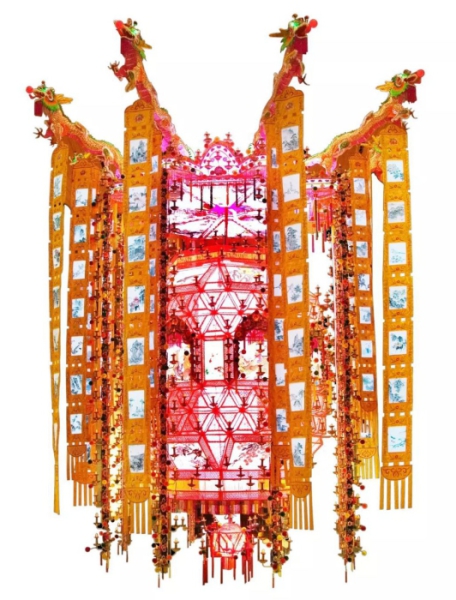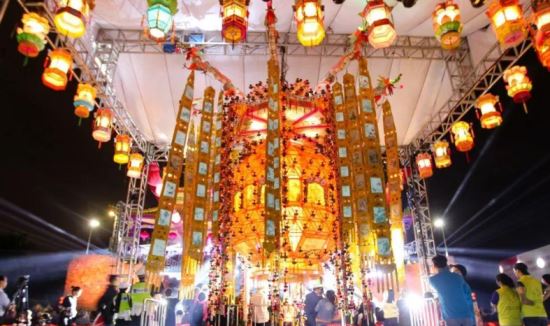

Thousand-cornered lantern
All flowers come from one tree while all corners the same origin. The thousand-cornered lantern used to be a royal lantern exclusive to the Zhao Family of the Song Dynasty in Dongguan. A thousand years later, the lantern came into the folk world. Over the past more than half a century after 1949, the thousand-cornered lantern, which had ups and downs in its life, has been exuding extraordinary brilliance again with the effort of its inheritors including several senior craftsmen and three generations of the Zhang Family in old Dongguan, winning the honorary title of "China's No.1 Lantern" and the Gold Mountain Flower Award, the highest Chinese folk prize for workmanship. Today, Zhang Shuqi, the third-generation inheritor of the Zhang Family's craftsmanship, remains committed to lantern making. It is because of the unique glamor of the thousand-cornered lantern and his father's behest that Zhang Shuqi never gave up on lanterning making.
Inheritance of thousand-cornered lantern craftsmanship
Three senior craftsmen enjoy a widespread reputation
In Guancheng District, Dongguan City, the thousand cornered lantern is almost a household name, especially among the elderly, who are excited when talking about it. Legend has it that the thousand-cornered lantern was originally unique to the Zhao Family in Dongguan, a member of the imperial family of the Song Dynasty. Therefore, in ancient times, the Zhao Family's ancestral hall was the only place in Dongguan to be qualified for use of the thousand-cornered lantern, which was hung when a baby boy was born. On the 24 ribbons attached to the thousand-cornered lantern was the "Picture of the Twenty-four Filial Exemplars" embroidered personally by a princess. As a relic belonging to the imperial family of the Song Dynasty, it was kept by the Zhao Family.
According to the local elder people, because of the war in the Song Dynasty, the Zhao Family moved to Dongguan with a princess. On every New Year's Eve and Lantern Festival, the princess would recall old memories at familiar sights and think of the bustling place. What was the most unforgettable to her was a structurally complicated and gorgeous fancy lantern. She hired skilled craftsmen to make a palace lantern of this kind. According to her memory, the craftsmen spend one or two years making one.
In the early days of the Yuan Dynasty, the Zhao Family continued to make thousand-cornered lanterns, but owing to the high cost and complex workmanship, they could only make one every ten years. Whenever a baby boy was born, the Zhao Family would light the lantern to celebrate; on every New Year's Eve and Lantern Festival, the Zhao Family's ancestral hall, located in Jieyuanfang, Dongguan, would be decorated with lanterns and colored hangings, which fascinated the common people passing by.

Thousand-cornered lantern lighting ceremony
The thousand-cornered lantern is also very huge when seen from afar. The major structure is composed of many small-sized lanterns. Considering the large number of lanterns and that every small lantern has a number of corners, it is called "thousand-cornered lantern". It is said that the lantern was named in the native dialect of Dongguan. In the dialect of Dongguan, the word "corner" pronounces the same as the word "number" while the word "lantern" pronounces the same as the word "boy", so the name means having a growing family.
In the year of Dingchou during the reign of the Republic of China (1937), the Dongguan poet Yang Hebin described the lantern in The Zhuzhi Poem to Dongguan: "The Lantern Festival is celebrated in a thousand-cornered lantern, and the Zhao Family is directly descended from the imperial family of the Song Dynasty. I hope the lantern will be lit to announce good news, with more boys born every year." This shows how grand the lantern festival was in those days.